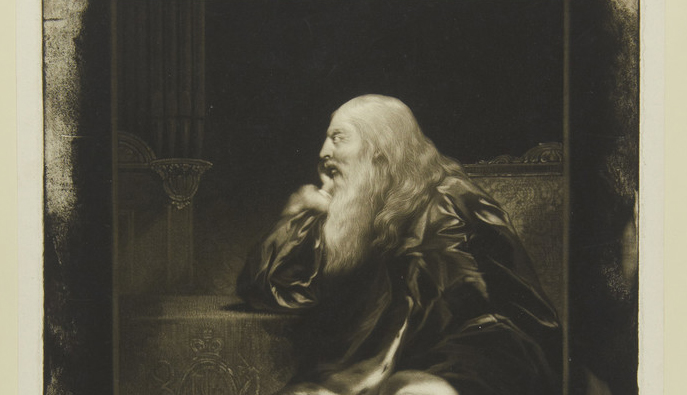Though not chiefly remembered for his patronage of the arts, George III made several high-profile additions to the modern-day Royal Collection.
In 1761, he purchased the collection of Consul Joseph Smith of Venice, thus acquiring dozens of works by Canaletto, as well as the Royal Collection's only Vermeer. With his wife, Queen Charlotte, George was an active patron of portrait painters, commissioning depictions of himself and his family from artists including Thomas Gainsborough and Jeremiah Meyer, as well as Johan Joseph Zoffany.
However, his primary interest was in books. His collection of 65,000 books and manuscripts became one of the foundational collections of the British Library when, in 1823, it was presented to the nation by his son, George IV.
This painting of a scene from Timon of Athens was one of George III’s first major painting commissions, and it demonstrates an early engagement with Shakespeare on the part of the monarch. It also reveals the king’s taste for Classical compositions, perhaps an unexpected idiom for an illustration of a Shakespeare play. Its subject – the eponymous Timon of Athens throwing money contemptuously at the people who have come to visit him – may have been selected for its similarity to the Classical story of Alexander and Diogenes.
Here, Shakespeare provides an opportunity for a specifically English vision of the improving Classicism George would continue to favour throughout his life.








